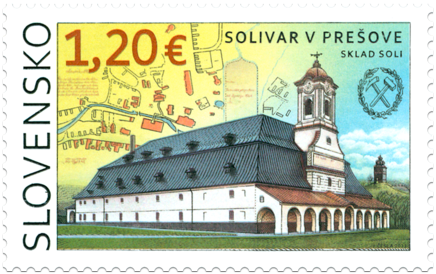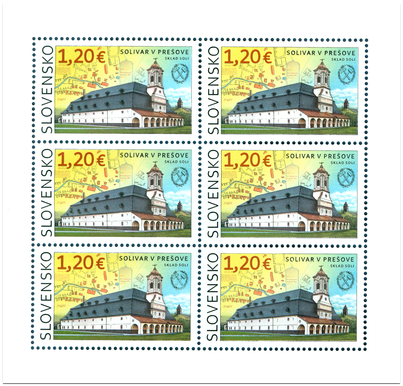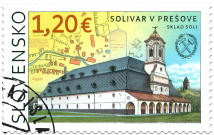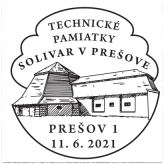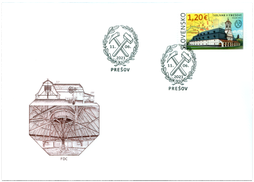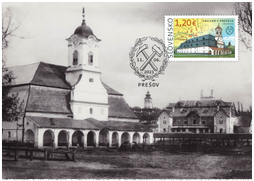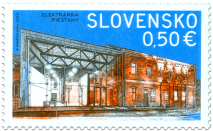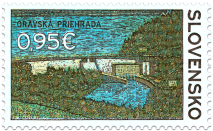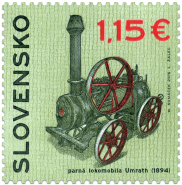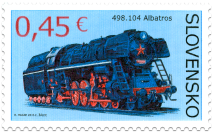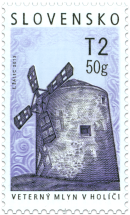743 Date of issue
11.06.2021 Face value
1.20 € Sell price
1.20 €
The Saltworks in Prešov is among the most significant technical monuments in Slovakia. The singularity and uniqueness of the premises cannot be rivalled by any other similar technical monument at home or even beyond the borders of Europe. The Saltworks made its mark in history not only through the quality of salt it produced but also through the remarkable technical machinery that has been preserved until today.
The complex of buildings used for the pumping and extraction of salt from the brine was constructed in the 17th century. The entire complex was declared a National Cultural Monument in 1968, which promoted it to its position as a unique object in Slovakia.
The premises of the historical Saltworks are located on, what is today, the periphery of the capital of the Šariš region – the City of Prešov. It is comprised of several detached buildings, including the original technological and technical machinery. The most interesting buildings that have been preserved include “the Gápeľ building” (a pump driven by animals) situated above the Leopold shaft, “brine reservoirs Četerne”, “extraction room Varňa” called František, a salt storage facility (Komore) and “the Klopačka building” called Turňa (signals were sent from this building to tell the miners to come to work).
In 1571, under the leadership of Wolfgang Styx, work began on the excavation of the Leopold shaft. This was the first, the deepest and, at the same time, the oldest shaft in the area. The excavation took a year and the shaft reached a depth of 155 metres. The Gápeľ building was erected above it in 1674. The Leopold shaft was the main shaft and was used for salt mining, to pump out brine, the removal of gangue, for ventilation and as the access to the mine for the miners. Over time further shafts were excavated.
A critical turn in the development of the Saltworks took place at midnight, on the 21st February 1752, when the mine, including all its horizontals, was flooded with water from an abandoned shaft. The Leopold mine was officially closed on 1st July 1752. The date is considered to be the turning point that put an end to the mining of rock salt in the area.
The flooding of the mine forced the company management to find an alternative way to procure salt. The shape of the entire premises began to change. New production buildings were constructed and advanced technology replaced the old machinery. It became a “large salt factory”.
Although, the old Saltworks ceased to operate long ago, its faded glory has been brought back to life through the unique museum that follows genius loci of the historical area of Soľná Baňa. This technical complex, reflecting the uniqueness, grandeur and genius of its creators, is a significant artefact of our history.
Marek Duchoň
Show less© 2024 POFIS - Postal philatelic service. All rights reserved

